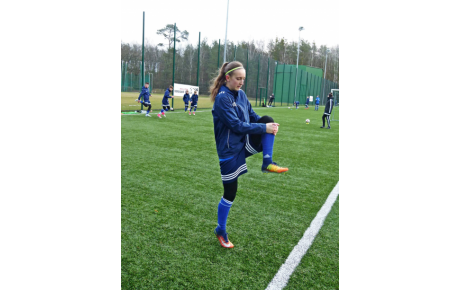Many players do not want to stretch because it hurts, because it is boring, because they do not see the point. Stretching allows avoiding injuries and using our capabilities to the maximum. If you look at the training sessions of the best players in the world, you will notice that even when a coach explains an exercise, they try to use the time for additional stretching of their muscles.
What determines the proper stretching of muscles? Should we stretch dynamically or statically? I will try to easily explain these questions which often bother many players.
Among three types of muscles that we can distinguish due to structure, we are most interested in those transversely striated, i.e. those which we can "command" with the power of the mind. Such muscles can be divided into bunches resembling an electric cable woven with dense, smaller threads, i.e. muscle fibers. Whereas each individual muscle fibre is made of a sarcomere and at the level of those sarcomeres the so-called stretch and contraction of muscles takes place.
In the popular nomenclature, when talking about stretching, we mean separation of muscle attachments. Often the muscle is compared to a spring. However, it should be known that while muscle looks a bit like a spring in terms of movement, different processes take place during movement, because if someone is more stretched he does not increase the physiological muscle length. If this was the case, the stretched muscle would remain elongated and "loose".
Each sarcomere consists of two types of proteins (actin and myosin) that overlap each other. It is the parallel shifting of these fibres in relation to each other that causes the so-called contraction and relaxation of the muscle. So, the more such connections and the better they work, the more is the muscle stretchy, flexible and less susceptible to injuries. It should also be remembered that stretching, the same way as other workouts, causes micro-injuries in the form of interruptions in individual connections in the sarcomere, whereas new ones are created in those places which in turn leads to an increase in the number of previously mentioned "overlaps" and the muscle structure becomes more flexible.
Since we know how it works, let us explain the following: is it better to tighten the muscle and then stretch it in the static way or stretch it by exercising dynamically?
The answer is simple: both ways are correct.
It all depends on what stage of the training you are at. It must be remembered that work at the muscular level is more efficient if the muscle is warmed up, which is why I personally recommend dynamic stretching before the game for a simple reason. During static stretching the muscle cools down, and we do not raise its temperature so that we could lower it now. Therefore, remember that before stretching at home always precede it with rolling and exercises that will raise the temperature of the muscles and body, only then your work will be more effective.
Patryk Bieńkowski, M.Sc.
Physiotherapist, manual therapist











